No matter where you buy it, fresh produce (especially organic produce) isn’t cheap. So today I want to share some insider tips for saving money at the farmers market.
If you’ve been wanting to check out your local farmers market, but have concerns that it’ll break your grocery budget, these money-saving tips are for you.
There are so many great reasons to shop at farmers markets. You’ll find better tasting food, fresher produce that hasn’t spent a week in transport, and support small local farmers who need our business.
So let’s dive into my favorite ways to save money at the farmers market.
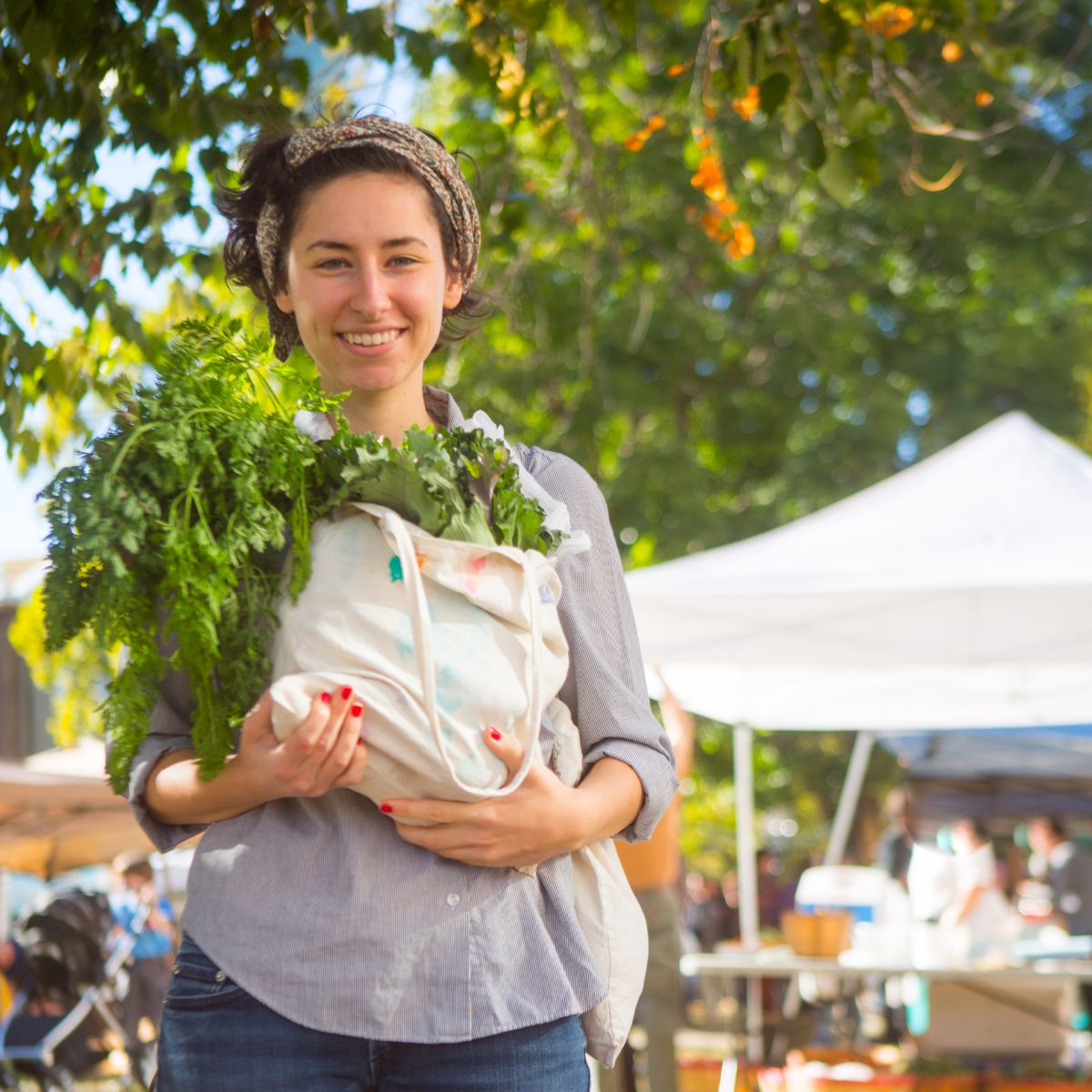
8 Tips to Save Money at the Farmers Market
1. Buy what’s abundant
So here’s a thing I’ve noticed time and time again. You pay less at farmers markets for peak season produce, not just in-season produce. There’s a difference.
Meaning, when farmers have cucumbers coming out their ears, that’s the cheapest time to buy cucumbers. Makes sense right? It’s supply and demand.
On the other hand, those first red tomatoes of the season will come at a premium. Farmers don’t have many of them to sell, and consumers like you and I will often pay more because its been so long since we’ve had a juicy, flavorful, perfectly ripe, red-on-the-inside tomato!
If you’ve ever bought grocery store tomatoes you know what I’m talking about! bleh…
All that to say, if you want to save money at the farmers market – buy less of those limited number, early season veggies and more of what’s ripening in droves. Don’t worry, ripe tomatoes will get cheaper as the season progresses.
2. Buy in bulk
Yes, even the farmers market has deals when you buy in bulk. If your household isn’t large enough to eat it all before it goes bad, bring a friend or offer to shop for a neighbor.
The most common bulk deals I see at farmers markets are 2 for deals. If you shop with someone who wants the extra item, split the discounted cost and you both save money.
There are benefits when shopping for two and the savings really add up!
Here are examples of bulk discounts I often see at the farmers market:
- Buy one basket of green beans for $5, or 2 for $8
- Cucumbers at $2 each, or 3 for $4
- One pint of cherry tomatoes for $5, or 2 for $8
- Heads of lettuce for $3 each, or 2 for $5
3. Shop late in the day
There are pros and cons to shopping at the end of the market day.
One downside is that choice items (i.e. the largest carrots and broccoli, the freshest looking lettuce) will most likely be picked over and gone. Another downside is that what you want may already be sold out entirely.
However, we’re talking about saving money at the farmers market and the benefit to shopping late is you get the best deals. All that fresh produce has a limited shelf life and farmers markets are usually a once a week opportunity to sell it.
That’s why you can often find good deals walking through the farmers market at the end of the day. I’m talking half price and BOGO on fresh fruits and vegetables. If you want the best prices, go right before the market closes for the day.
4. Comparison shop
Another great way to save money at the farmers market involves being selective about which farmers market you shop at. In my experience, some farmers markets are more expensive to shop than others.
If you have the luxury of choice, try shopping at the different farmers markets near where you live and compare prices (and quality!). You may find lower prices at a farmers market in a nearby small town, compared to prices at the farmers market in the city.
I also recommend comparison shopping different vendors within a single farmers market if you’re on a tight budget. When you arrive at the market, do a lap first without buying anything and scout out prices on the things you need.
In line with what I said earlier, one farmer might have an abundance of carrots this week and thus a lower price for carrots than their neighbor.
Doing a lap first is also an opportunity to see what’s freshest at the different farm stands, so you can plan your purchases.
5. Shop the discount section
Oh yes, you can get a great deal at the farmers market by checking to see which local farms have a discount section.
The discount section may be stocked with last week’s harvest that didn’t sell, or items that were harvested more than two or three days prior to the market. Foods such as root vegetables and winter squash can keep for weeks. If they don’t sell this week you might find them in the special deals section next week.
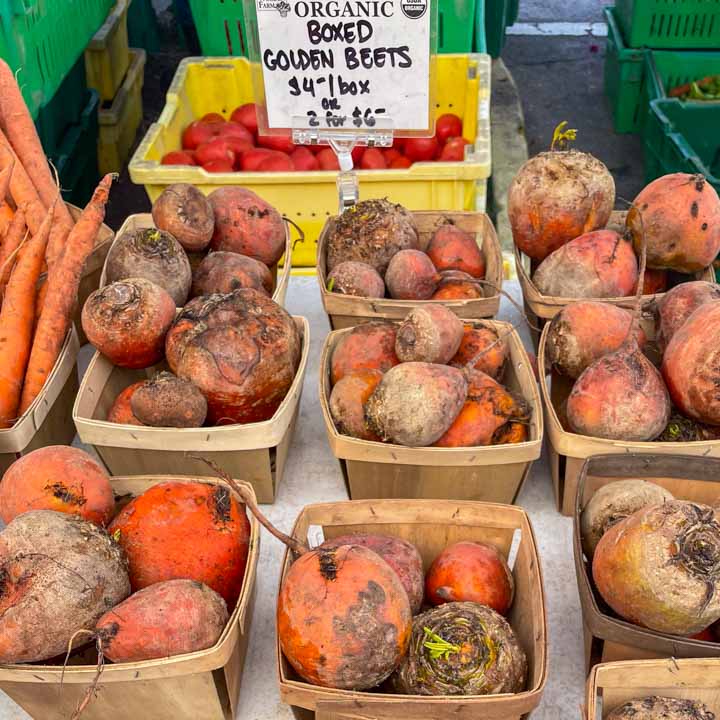
Another item that commonly shows up in the discount section is “ugly produce”. Ugly food is usually not in tip-top shape. This includes crooked carrots, bruised tomatoes, too-small squash or cauliflower that’s starting to go a little brown.
6. Pay with cash
Have you noticed that more and more retailers are passing credit card processing fees onto their customers?
In other words, you get a lower price if you pay with cash. I see it all the time lately, and the farmers market is no exception.
If you’re someone who prefers to pay with a card, and you want to save money, ask if there’s a discount for paying with cash. The fees retailers charge run around 2.5% to 3.5%. You won’t save a lot by paying with cash, but this adds up – especially if you’re on a limited budget.
7. Have a general meal plan
Meal planning for the coming week is another way to save money at the farmers market by avoiding impulse purchases.
Here’s the thing, and I know this is the case with me, sometimes I get so excited looking at everything fresh and delicious at the market that I buy more than I can eat that week. That’s OK when it comes to things that keep for awhile. It’s less OK when I buy too many greens or fresh herbs, the sort of things that go bad pretty quickly.
While it’s tricky to shop farmers markets with a strict meal plan if you’re new to this and don’t know what’s in season, having an idea of how many meals you’ll be cooking at home and a general idea of the ingredients is very helpful.
Here are some practical examples of putting this money saving tip to use:
Have a flexible shopping list: I have salad every day for lunch. So if I go to the farmers market on Saturday I know I need enough ingredients to make seven salads. So from there I can buy what looks good to go in salads, though I may not show up with an exact list of those ingredients.
Shop for sides: It’s helpful to shop the farmers market knowing how many servings of vegetables sides you’ll need for meals that week. You can choose exactly what sides once you get to the market, but go there knowing roughly how many servings you need.
Have simple, go-to recipes: Another trick is knowing some simple recipes for the seasonal produce that’s abundant (and cheap!) in your region.
By doing a little meal planning ahead of a farmers market shopping trip you’re more likely to buy only what you need.
8. Try new things with caution
This tip helps you save money at the farmers market by avoiding wasting money. Don’t buy something you’ve never had before unless you know a recipe to go with it.
I’m all for trying new food and consider this a perk of shopping farmers markets. But unless you want that bunch of kale to rot in the back of your produce drawer – be sure you have a plan for it before it hits your shopping basket.
If I see something new that I want to try, I’ll ask one of the farm stand workers what they like to make with it. I’ve never been disappointed. My popular pioppino mushroom recipe was inspired by this trick.
—
That’s a wrap!
To recap, we talked about buying peak season produce, shopping bulk deals, going late in the day, comparison shopping, browsing the discount section, paying with cash, having a general meal plan and only buying something new if you have a recipe for it.
If you’ve found these tips for saving money at the farmers market helpful I’d love if you posted a comment below.
I’ll close this article by answering a question you might have wondered about if your household receives SNAP benefits. SNAP (supplemental nutrition assistance program) provides money to help low-income families supplement their grocery budget.
Can I use SNAP benefits at the farmers market?
Yes. If your household is eligible for SNAP, and your farmers market is SNAP-authorized, you can use your benefits to buy fruits, vegetables, meat, bread and dairy at the farmer’s market.
Search for local farmers markets that accept SNAP by using the SNAP Retail Locator.


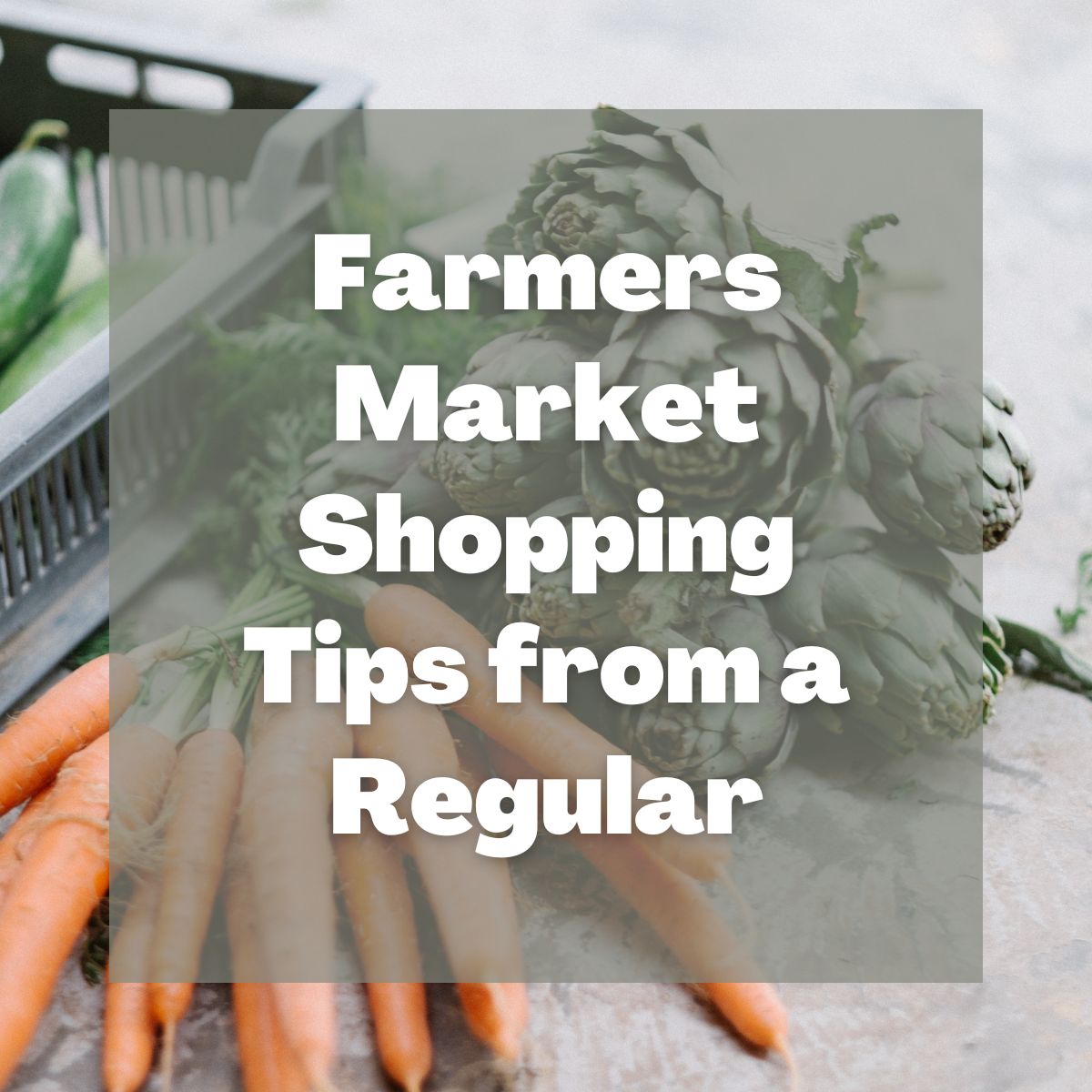
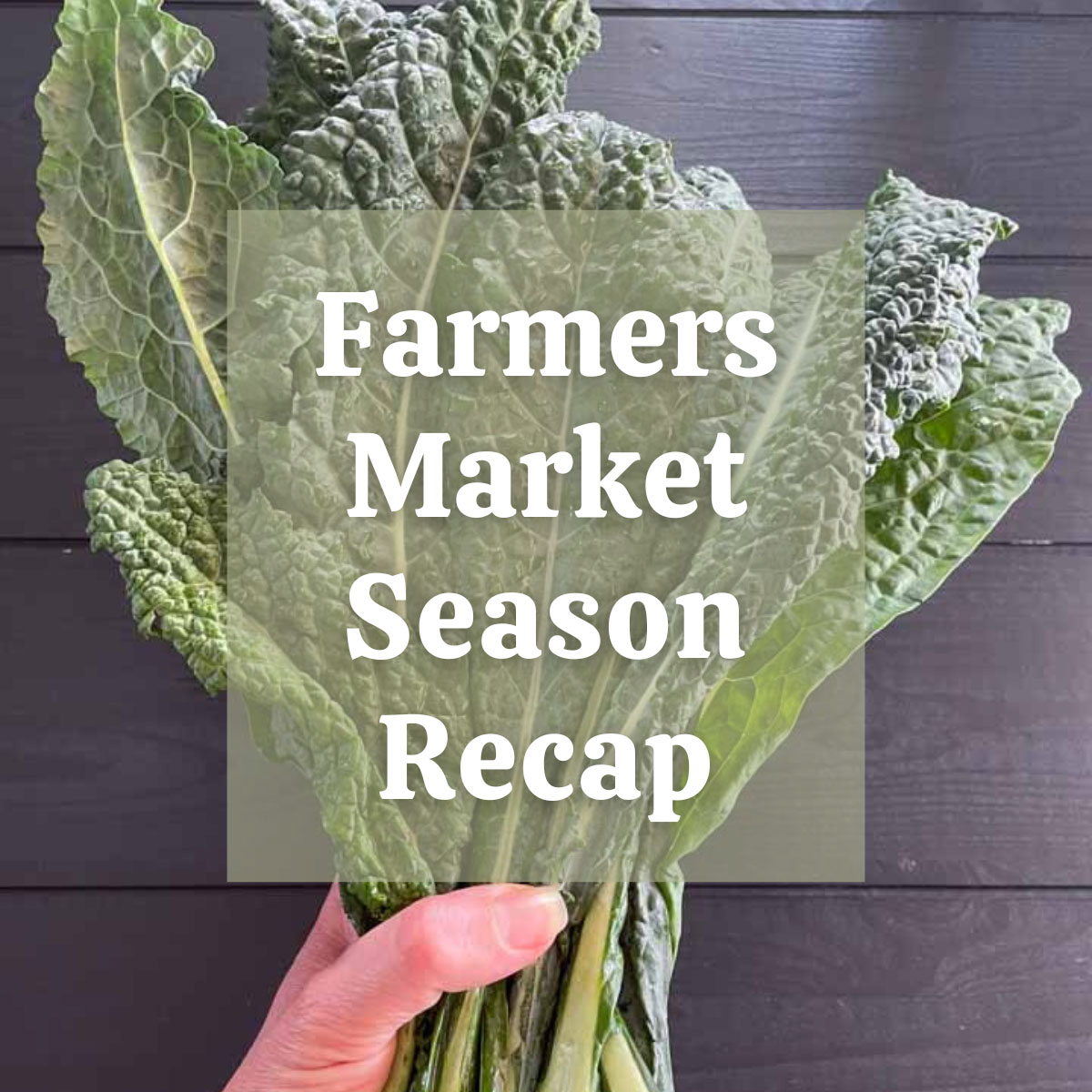
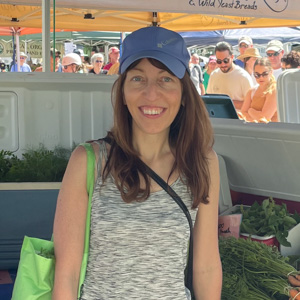

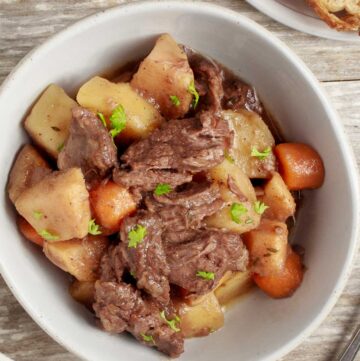

Sara,
Thank you for all the info,
I’m very disappoint that eggs are corn and soy feed/finished?
With all the ads saying Organic wild
Veg feed?
False advertising?
Hi Karl – not all eggs are from hens fed corn and soy. That’s where you need to ask the farmer or read the packaging if you want eggs from hens that aren’t fed corn or soy. If an egg carton says “vegetarian fed” they most likely are fed corn and/or soy. When hens are free to roam outdoors you can’t really guarantee they are vegetarians as hens love to eat bugs.